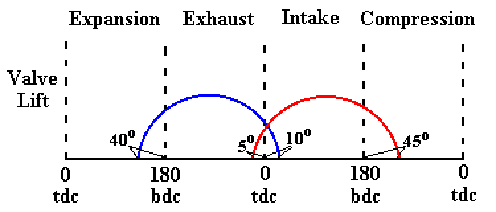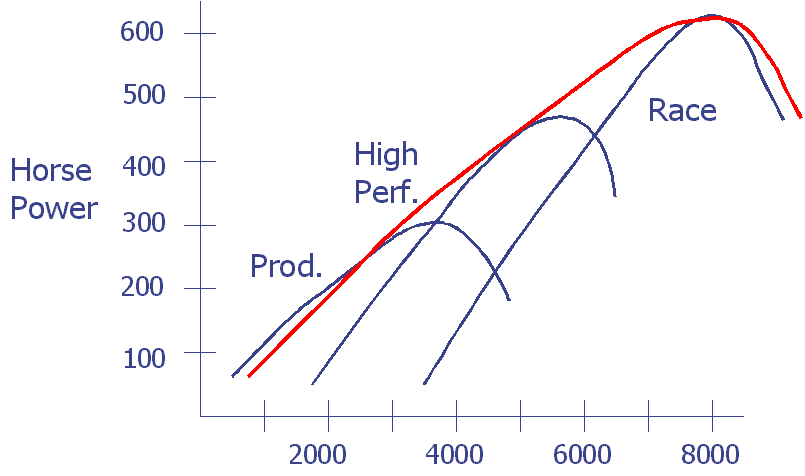
Benefits of Variable Valve Timing

Shown in the diagram above is normal valve timing. The intake valve opens before the piston reaches the top of the cylinder so it is fully open when the piston start moving down and drawing in air.
The exhaust valve opens before the piston reaches the bottom to allow the exhaust to escape.
As shown in the figure above there is an overlap between the intake valve opening and the exhaust valve closing.
Low Engine Speeds
At low engine speeds the exhaust pressure is higher than the intake pressure. During this time you want to minimize the overlap of the valves described above because the exhaust will flow into the intake. Reducing the overlap makes the engine idle smoother.
High Engine Speeds
At high engine speeds you can increase the overlap because the exhaust is moving so fast it helps draw air into the cylinder. At high speeds you need to get more air into the cylinder. There is a limit to the amount the valve can open. So, to get more air in the valve needs to stay open longer. At high speeds the valves can stay open longer because they can overlap more.
The graph below shows the horse power of three different engines at different RPMs.

The race engine obviously has the highest power. But, it can not run below 3700 RPMs. This is not good for everyday travel. The production engine idles well but does not generate much power.
The ideal situation would be for the engine's power curve to flow the red line in the graph. This would give it the best of both worlds, drivability and performance.
The difference in the engines shown in the graph is their valve timing and lift. So, if we could change the valve timing and/or lift from low RPMs to high RPMs we could create an engine that will follow the red line.
This can be accomplished by using Variable Valve Timing.
Click HERE to find out how Variable Valve Timing works and how it is implemented.